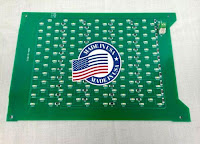|
Internet of Things (IoT) continues to gain traction in all kinds of industries and applications. Industrial Automation is one such industry that’s seen a big increase in IoT utilization—a very big increase. |
Industrial Automation refers to the use of various control devices like computers, robots, and information technologies for handling and controlling different processes and machines in an industry. It’s also done with a reduced need for human intervention, resulting in a more automated control performance.
The Internet of Things is the network of physical objects and devices around the world that are connected to the internet and specifically meant to collect and share data. In industrial automation, those connected devices are the computers, machines and robots mentioned above.
The growth of IoT in Industrial Automation is highlighted in a recent report by Berg Insight that found that the installed base of wireless IoT devices in Industrial Automation reached 21.3 million in 2018. That growth shows no signs of slowing as that number is expected to reach 50.3 million by 2023.

Wireless IoT solutions are great for parts of facilities that are hard to reach, cost prohibitive to connect with wired installations or have frequent modifications to workflows and layouts. In factory automation, wireless IoT can be used to control devices such as cranes and automated guided vehicles (AGVs) in material handling applications. They can also be used in process automation to connect instruments that enable plant operators to monitor and optimize processes in hazardous areas, which helps to ensure worker safety.
"Robust connectivity is critical to support industrial IoT use cases surrounding predictive maintenance and digital twins," said Fredrik Stalbrand, IoT Analyst at Berg Insight. He went on to explain that installation and maintenance of wireless solutions are more flexible and economical compared to wired technologies, enabling reconfigurable manufacturing system design.
2711-NL2 Backlight Replacement for Allen Bradley Panelview 900
Berg Insight’s report also estimated that annual shipments of wireless devices for industrial automation applications reached 4.6 million units worldwide in 2018, which
accounts for approximately 6 percent of all new connected nodes. That number is expected to reach 9.9 million in 2023, which is more evidence of the rapid growth of IoT in Industrial Automation.
While the adoption of wireless IoT solutions in industrial automation can help with everything from improved waste removal, refining supply chains to creating lean operations on the factory floor, there’s more: data. Big data. Data resides everywhere in manufacturing. Wireless IoT solutions work to gather and communicate that data so that it can be analyzed and utilized effectively. There is valuable data in Enterprise Resource Planning (ERP) systems, Product Lifecycle Management (PLM) systems, Manufacturing Execution Systems (MES) and Supplier Relationship Management (SRM) systems, as well as all the documents like spreadsheets and other files that a company accumulates. There is also data to be collected and utilized from outside the business from sources like vendors and even sales.
Industrial automation companies that continue to adopt IoT strategies stand the best chance to overcome organizational, process, data and system silos by automating the collection of data across divisions and operations. They’ll be positioned to better analyze and utilize all that data helping to ensure more efficient and profitable operations.
from engineering.com

